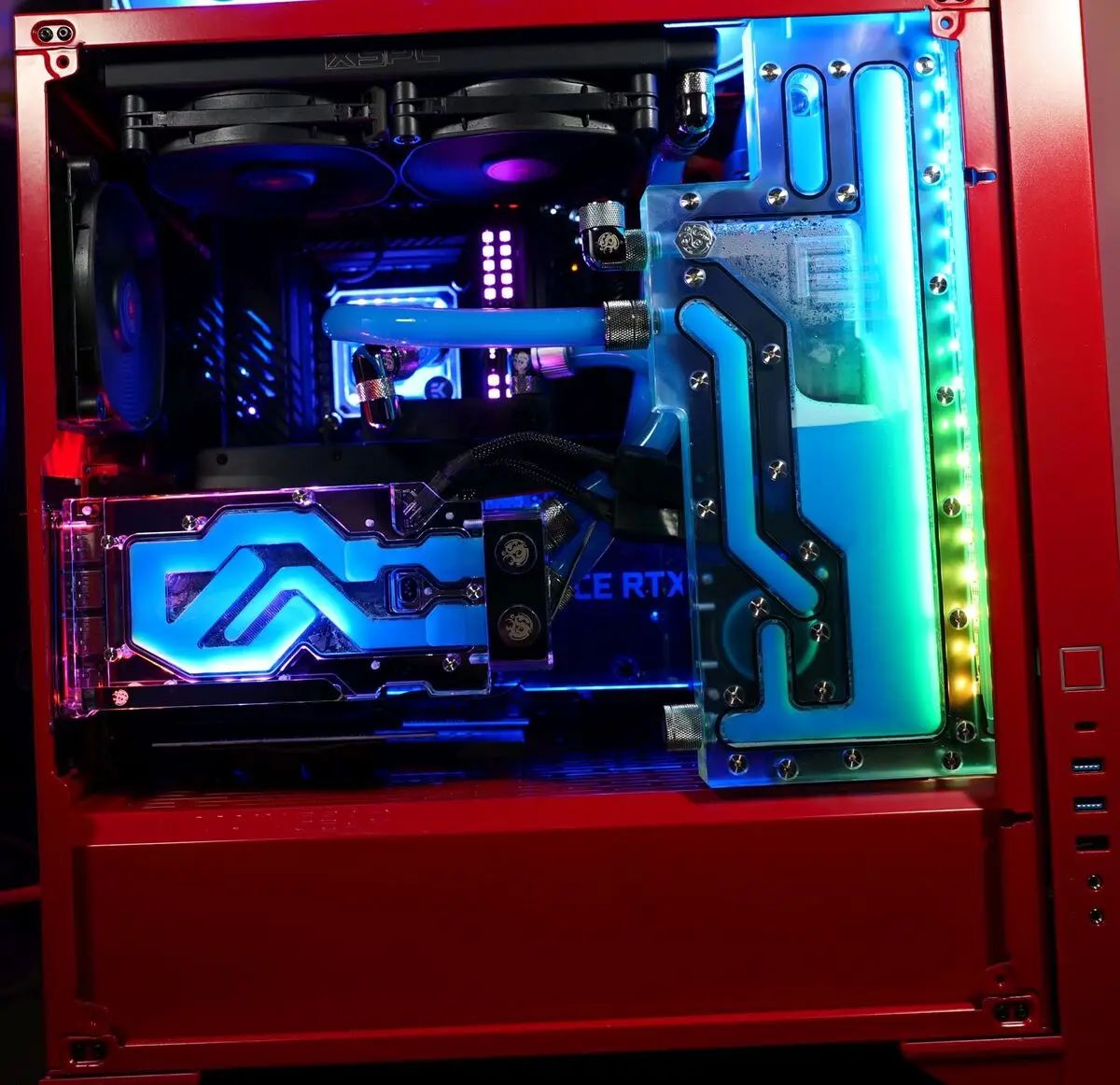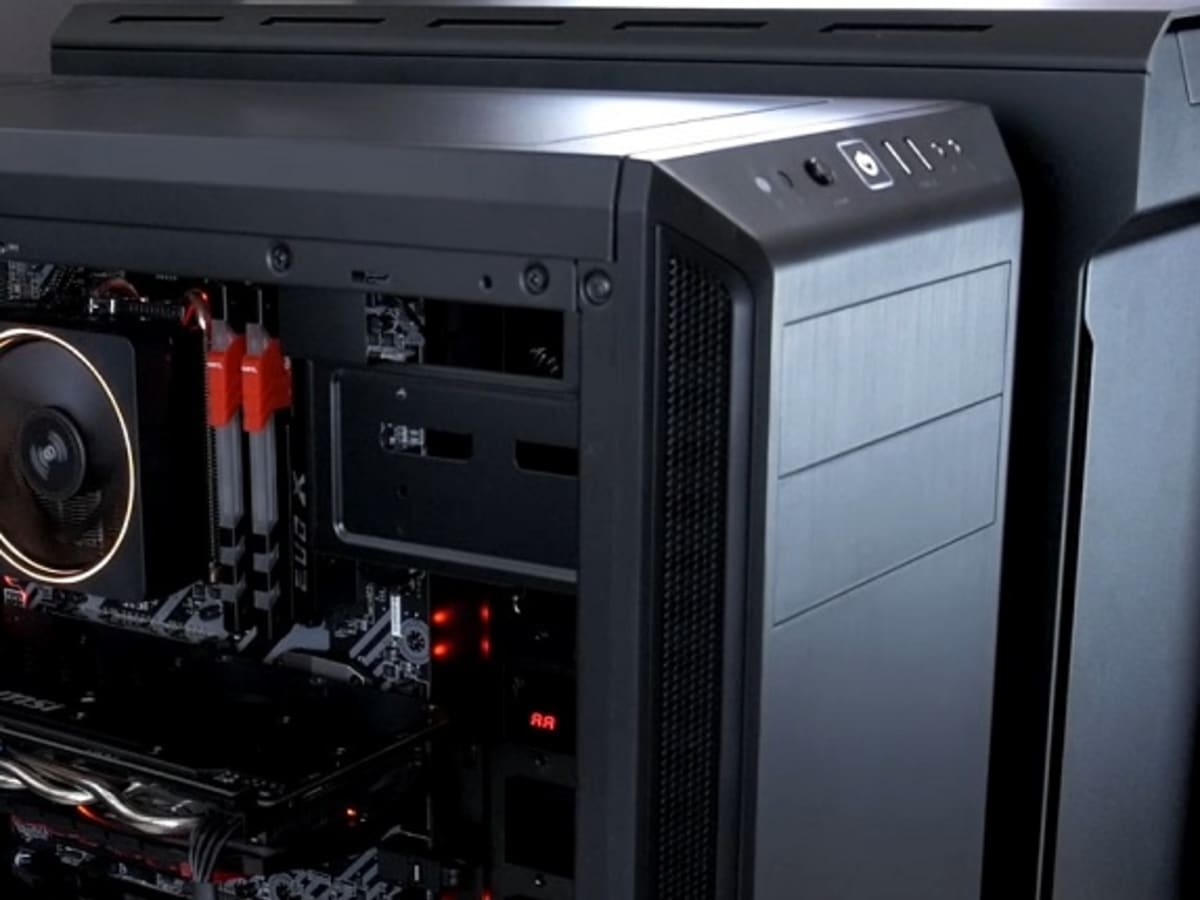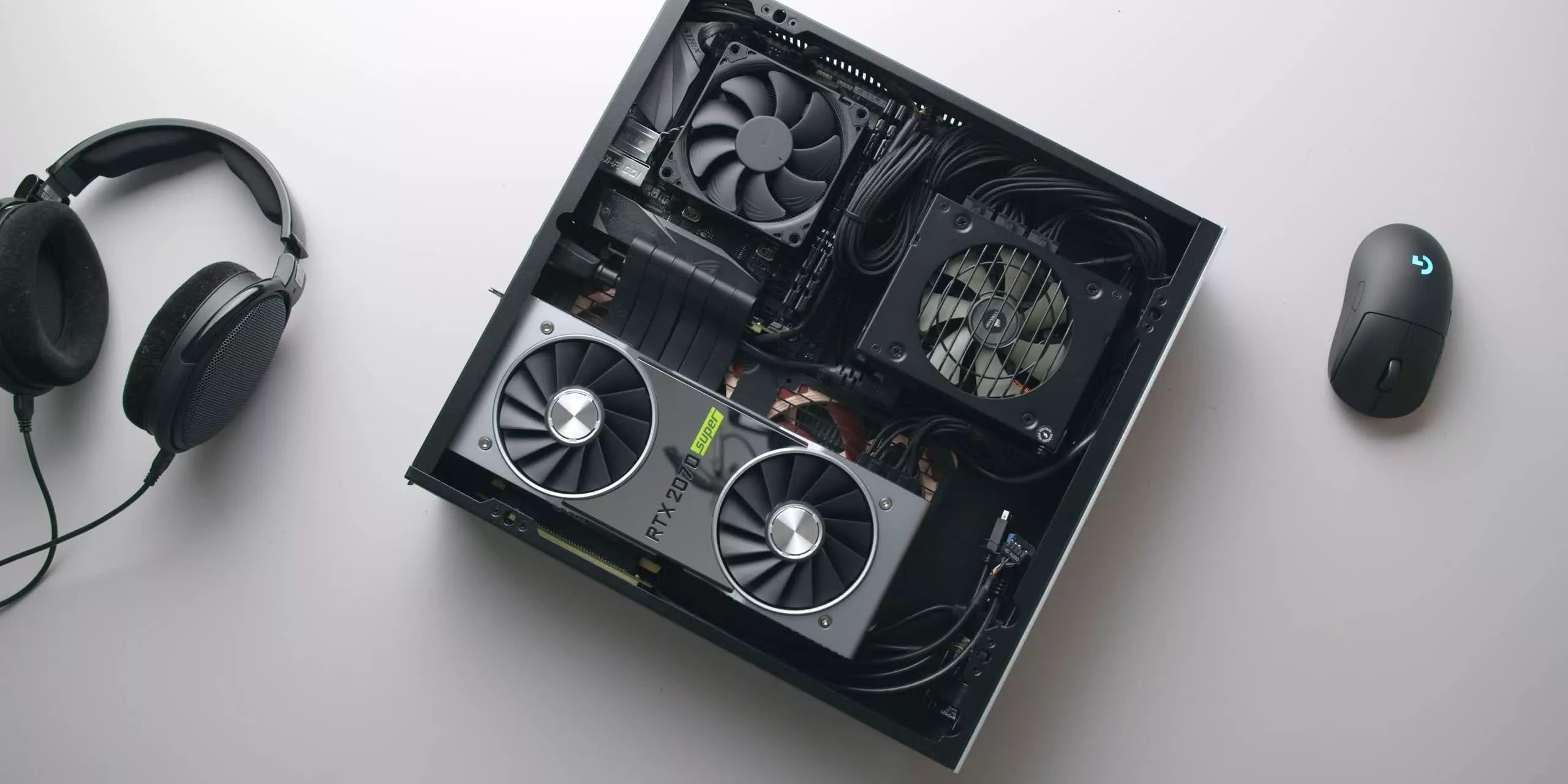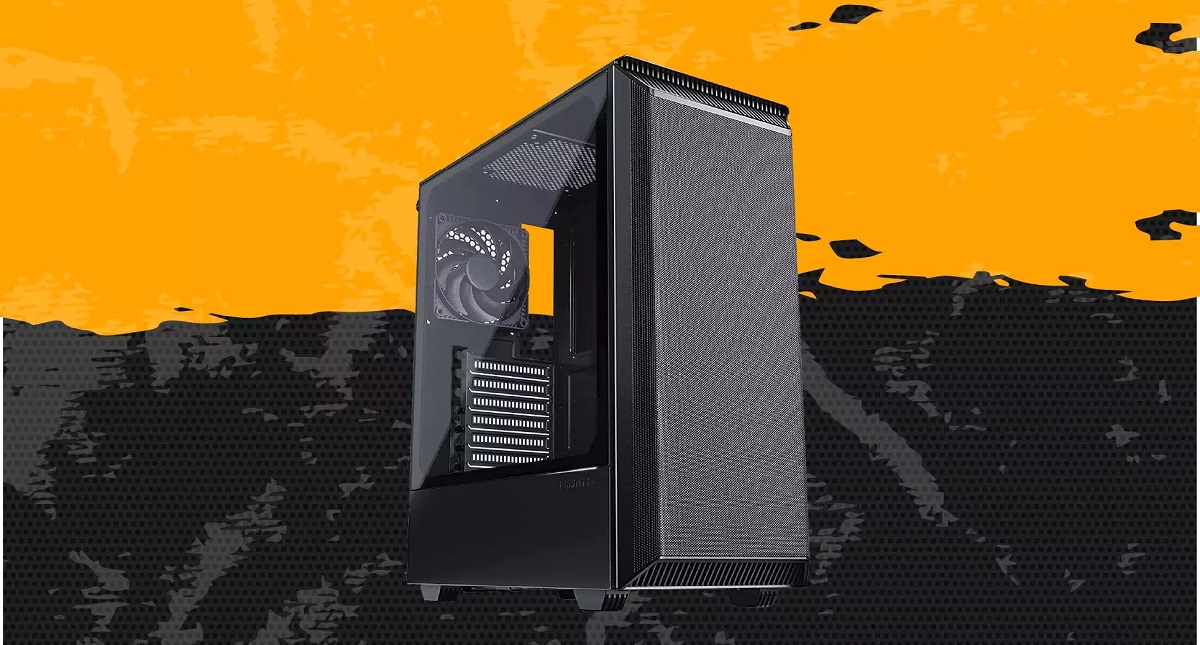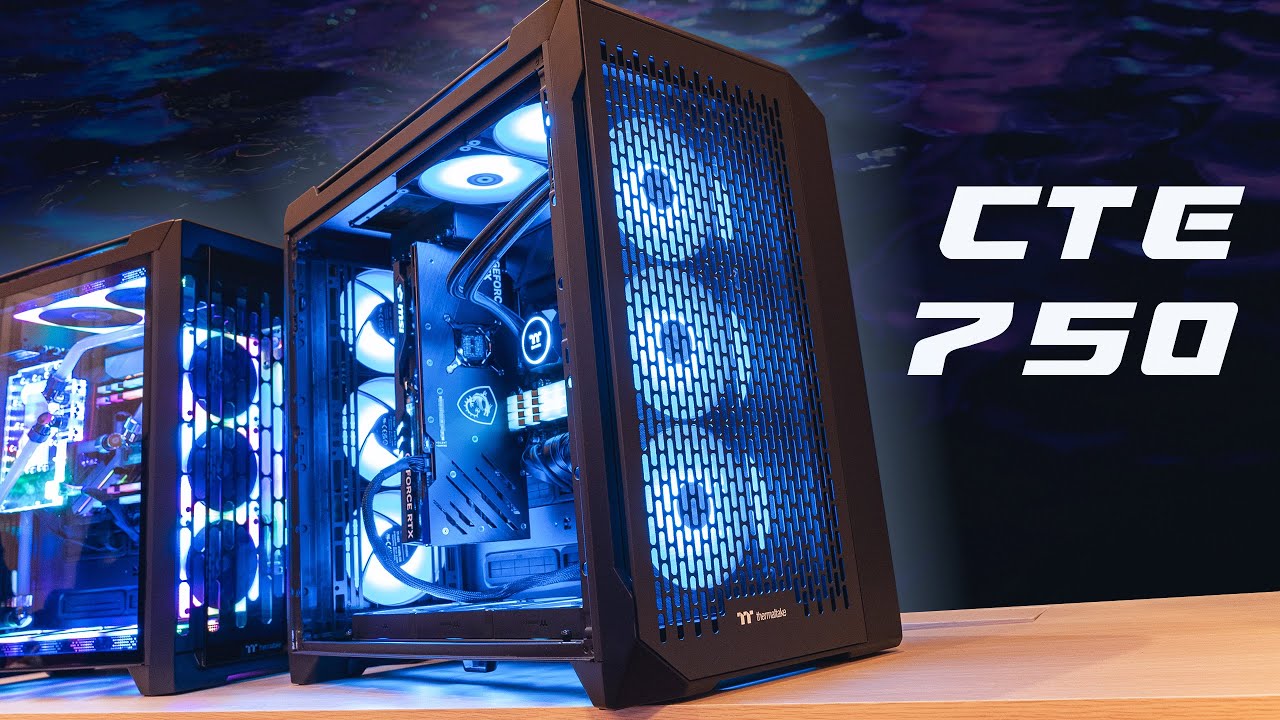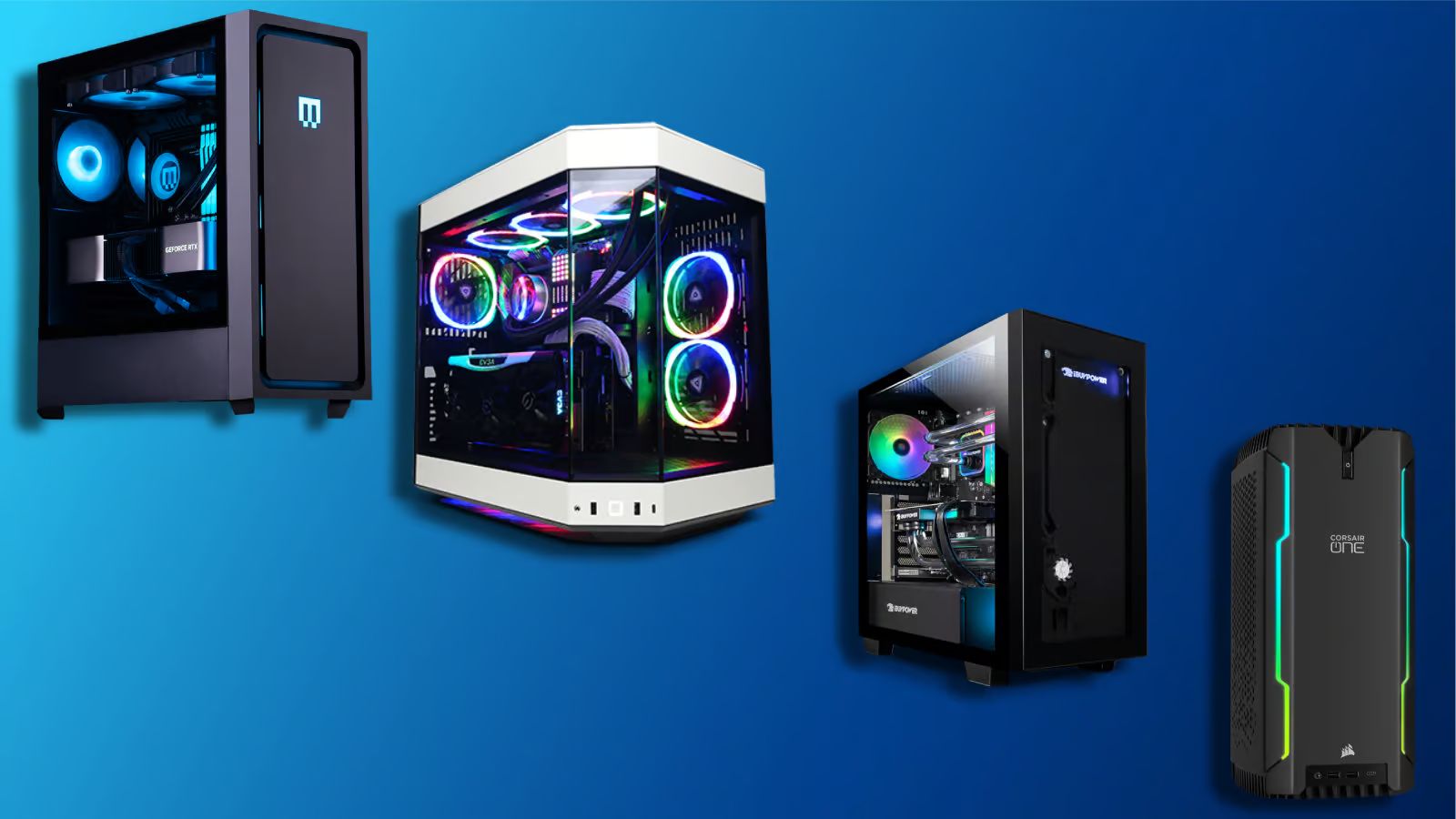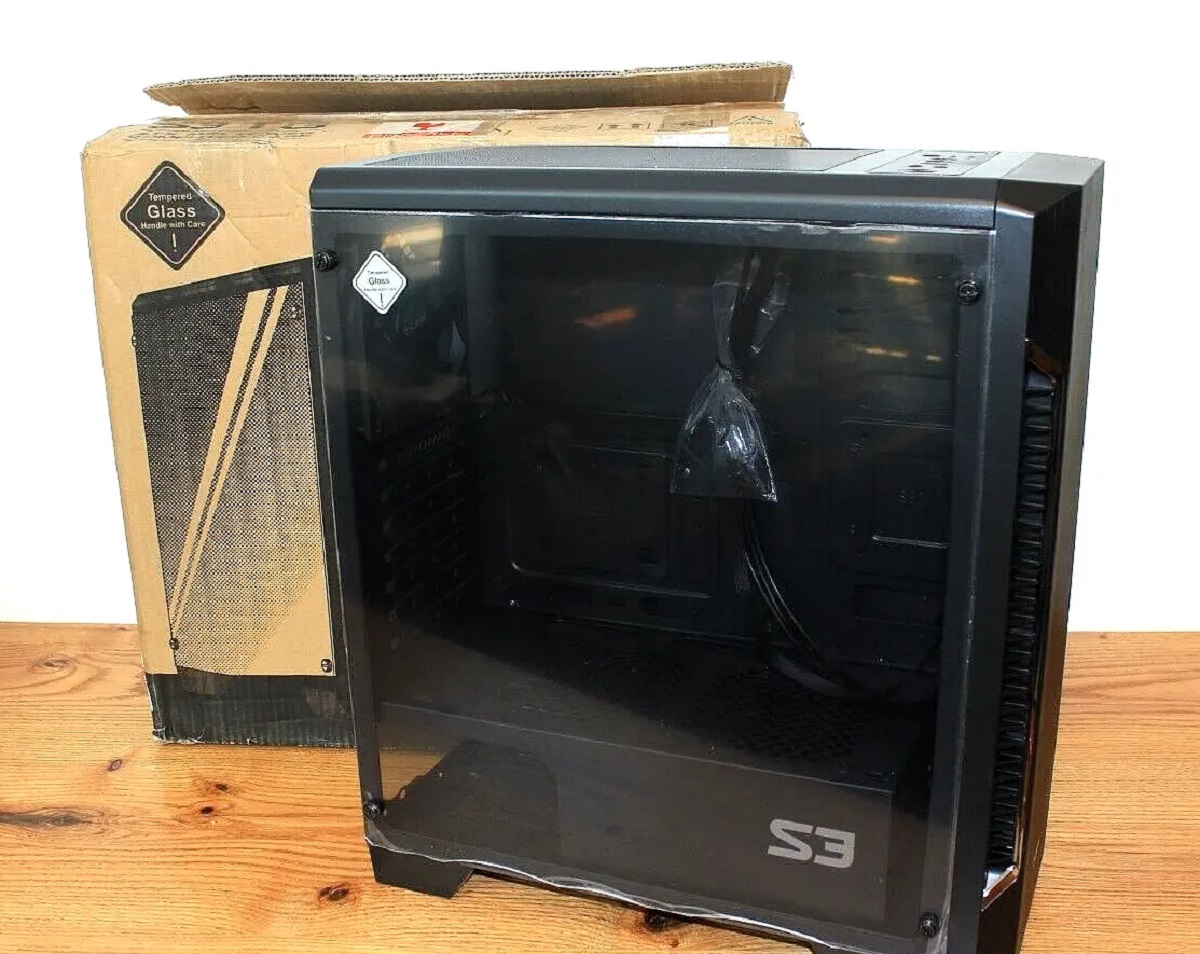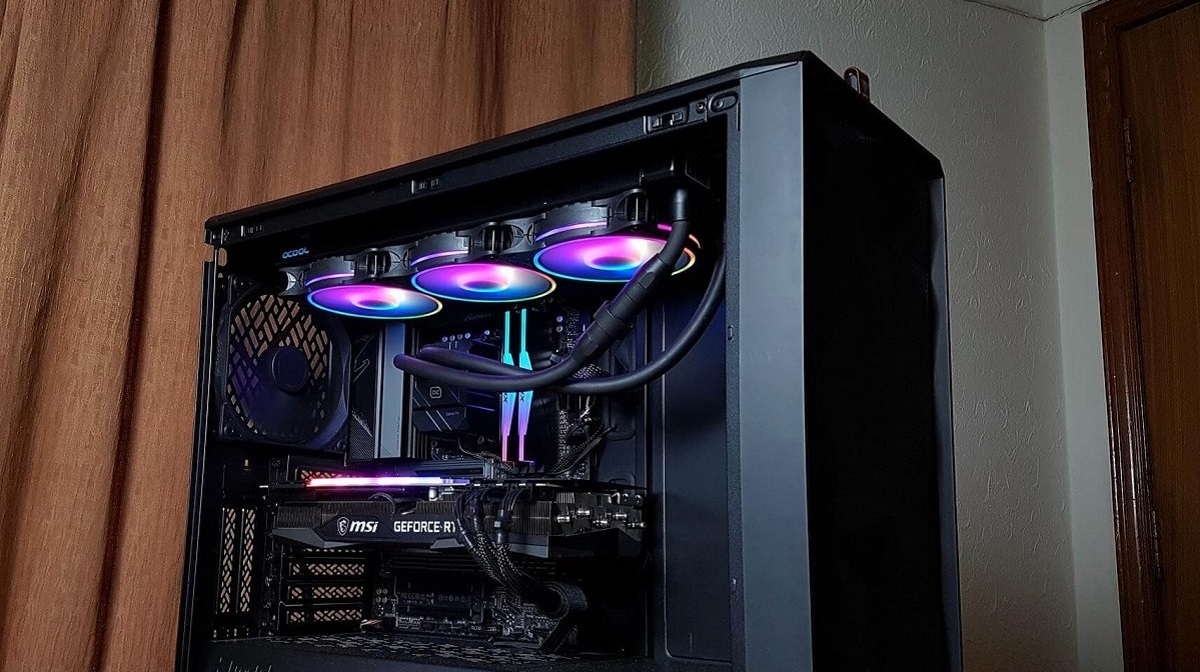Introduction
Welcome to the world of PC building! One of the first things you’ll encounter when diving into the realm of custom computer builds is the ATX form factor. While it may sound like a complex term, understanding what it means and how to identify it is essential for every PC enthusiast.
ATX, short for Advanced Technology Extended, refers to the standardized size and layout of computer components, such as motherboards, power supplies, and cases. It was developed by Intel in the mid-1990s as an improvement over the previous AT form factor, offering better cooling, expandability, and ease of use.
In this article, we will explore the world of ATX and how to determine if your PC case is ATX-compatible. Whether you are building your first PC or looking to upgrade your current system, knowing the ATX form factor will help you make informed decisions and ensure compatibility.
Not all PC cases are created equal, and using a case that doesn’t support the ATX form factor can limit your choices for components and hinder the overall performance of your build. By identifying if your PC case is ATX-friendly, you can confidently select the right components and enjoy a seamless building experience.
We will cover various aspects of the ATX form factor, including the physical dimensions, connectors, motherboard compatibility, and the flexibility it offers for future modifications. So, let’s dive in and discover the world of ATX!
Understanding ATX
Before we delve into how to identify an ATX PC case, let’s first understand what the ATX form factor entails. As mentioned earlier, ATX stands for Advanced Technology Extended, and it has become the industry standard for computer components.
The ATX form factor encompasses a standardized set of guidelines for the size, layout, and connectivity of computer hardware. It was developed by Intel to address the limitations of the previous AT form factor, which was larger and less efficient in terms of cooling and compatibility.
ATX cases are designed to accommodate ATX motherboards, which are the backbone of any PC build. These motherboards feature specific screw hole locations and an I/O (input/output) shield that aligns with the corresponding openings on an ATX case.
One of the key advantages of the ATX form factor is its improved expandability. ATX cases typically offer more internal space for additional components, such as graphics cards, storage drives, and power supplies. This allows for greater customization and future upgrades.
Another notable feature of ATX cases is their enhanced cooling capabilities. They often have multiple fan mounts and provisions for installing liquid cooling solutions, ensuring that your components stay within optimal temperature ranges even during demanding tasks.
Moreover, the ATX form factor also dictates the placement and availability of ports and connectors on the case. This ensures easy accessibility for connecting peripherals, such as USB devices, audio jacks, and other external devices.
By understanding the fundamentals of the ATX form factor, you gain valuable insight into the compatibility and flexibility it offers for your PC build. Now, let’s move on to the practical aspect of identifying an ATX PC case and its key characteristics.
What is the ATX Form Factor?
The ATX form factor is a standardized specification that determines the physical dimensions, layout, and connectivity options for computer components, particularly motherboards and cases. Developed by Intel, the ATX form factor revolutionized the PC industry by offering improved functionality and expandability.
At its core, the ATX form factor defines the size and placement of various components within a computer case. Compared to the older AT (Advanced Technology) form factor, ATX cases are generally smaller and more streamlined, making them easier to work with and providing better airflow for cooling.
The dimensions of an ATX motherboard are typically 12 inches by 9.6 inches (305 mm by 244 mm), although there may be slight variations among different manufacturers. This standard size ensures compatibility with ATX cases, which are designed to accommodate these dimensions.
One of the key features of the ATX form factor is its expandability. ATX cases offer ample space for multiple expansion slots, allowing users to add graphics cards, sound cards, and other peripherals without constraints. This flexibility makes ATX an ideal choice for gaming enthusiasts, content creators, and those who require high-performance systems.
Additionally, the ATX form factor also defines the positioning of components on the motherboard. This standardized layout ensures that connectors, such as SATA ports, USB headers, and audio jacks, are conveniently located and easily accessible from the back of the case. It simplifies the build process and makes cable management more efficient.
Furthermore, the ATX form factor specifies the location of the power supply unit (PSU) in a PC case. In most ATX cases, the PSU is positioned at the top or bottom rear of the case, allowing for efficient heat dissipation and minimizing cable clutter.
Overall, the ATX form factor revolutionized the PC industry by providing a standardized framework for compatibility and expandability. It allows for easier customization, seamless upgrades, and efficient cooling, making ATX cases a popular choice among PC builders.
Why Is It Important to Know If My PC Case Is ATX?
Knowing whether your PC case is ATX-compatible is crucial for several reasons. Whether you are planning to build a new PC or considering an upgrade, understanding the compatibility of your case with the ATX form factor is essential to ensure a smooth and successful build process. Here are a few reasons why it is important to know if your PC case is ATX:
1. Compatibility with Motherboards: The ATX form factor dictates the size and layout of the motherboard and its corresponding screw hole locations. If your PC case is not ATX-compatible, it may not have the correct mounting points and I/O shield cutouts to accommodate an ATX motherboard, resulting in an incompatible setup.
2. Component Flexibility: ATX cases provide more space for components, such as graphics cards, storage drives, and power supplies. If your case is not ATX-compatible, you may be limited in terms of expansion options and component compatibility. This can restrict your ability to customize and upgrade your PC in the future.
3. Cooling Performance: ATX cases are designed with improved airflow and ventilation, enabling better cooling for high-performance components. If your case does not follow the ATX form factor, it may not have the necessary fan mounts, airflow channels, or provisions for liquid cooling solutions. This can lead to suboptimal cooling and potentially affect the longevity and performance of your PC.
4. Cable Management: ATX cases often feature dedicated cable management solutions, such as routing holes, tie-down points, and space behind the motherboard tray. These features help keep cables organized, ensuring a clean and clutter-free build. If your case is not ATX-compatible, it may lack these cable management features, which can make the build process more challenging and impact the overall aesthetics and airflow of your PC.
5. Future Upgradability: The ATX form factor provides a standard layout and size that is widely supported by PC component manufacturers. This means that choosing an ATX-compatible case ensures compatibility with a vast range of future motherboard and component releases. It allows you to keep up with technological advancements and easily upgrade your system as needed.
By understanding the importance of ATX compatibility, you can make informed decisions when selecting a PC case for your build. It ensures a seamless and compatible setup, offering flexibility, expandability, and optimal performance for your custom PC.
Identifying an ATX PC Case
Identifying whether your PC case is ATX-compatible is relatively straightforward. Here are some key features and characteristics to look for when determining if your case follows the ATX form factor:
1. Physical Size: ATX cases typically have a standardized size, measuring approximately 18 inches (or 457 mm) in height, 8 inches (or 203 mm) in width, and 18-20 inches (or 457-508 mm) in depth. However, variations in size may exist among different manufacturers, so be sure to check the specifications of your specific case.
2. Motherboard Mounting Holes: An ATX case should have a set of mounting holes that align with the screw holes on an ATX motherboard. The standard ATX form factor consists of nine mounting holes in a specific arrangement. You can visually inspect the case’s interior to identify if the positioning of the motherboard standoffs matches the ATX layout.
3. I/O Shield Cutout: The I/O shield cutout on the rear of the case should align with the ports and connectors on the back panel of an ATX motherboard. This allows for seamless integration and easy access to peripherals, such as USB ports, audio jacks, and Ethernet ports.
4. Expansion Slots: An ATX case usually features several expansion slots located at the rear of the case. These slots provide access to add-on components like graphics cards, sound cards, and extra storage controllers. Ensure that your case has enough expansion slots to accommodate your desired configuration.
5. Power Supply Positions: ATX cases typically have designated positions for mounting the power supply unit (PSU). Most commonly, the PSU is located at the top or bottom rear of the case, with openings for cables and ventilation. Make sure your case has the appropriate PSU mounting location and clearances.
When examining your PC case, refer to the manufacturer’s specifications or user manual to verify if it aligns with the ATX form factor. Additionally, you can look for “ATX” or “ATX Compatible” markings on the packaging or product description.
It’s worth noting that there are variations of the ATX form factor, such as micro-ATX (mATX) and mini-ITX, which have slightly different sizes and mounting hole configurations. Ensure that you correctly identify your case’s compatibility with the ATX standard that matches your motherboard.
By carefully inspecting these characteristics, you can determine if your PC case follows the ATX form factor. This knowledge will help you make informed decisions when selecting components and ensure a smooth and compatible build process.
Size and Dimensions of an ATX PC Case
ATX PC cases are known for their standardized size and dimensions, which provide compatibility with ATX motherboards and various other components. Understanding the size and dimensions of an ATX case is crucial when planning your PC build or considering an upgrade.
The typical dimensions of an ATX case are around 18 inches (or 457 mm) in height, 8 inches (or 203 mm) in width, and 18-20 inches (or 457-508 mm) in depth. These dimensions allow for ample internal space to accommodate the motherboard, expansion cards, storage drives, and power supply unit (PSU).
It is important to note that while these dimensions are considered standard, variations exist among different manufacturers and specific case models. Some ATX cases may be slightly taller or shorter, wider or narrower, or have varying depths. Therefore, always refer to the manufacturer’s specifications to ensure proper compatibility.
ATX cases are larger compared to smaller form factors, such as micro-ATX (mATX) and mini-ITX, to provide additional room for components and better airflow. The larger size allows for more expansion slots, additional storage bays, and better cable management options.
Furthermore, an ATX case should have sufficient mounting holes on its motherboard tray to align with the screw holes on an ATX motherboard. The standardized ATX form factor consists of nine mounting holes arranged in a specific configuration. These holes ensure secure and proper installation of the motherboard within the case.
Due to their larger size, ATX cases offer better expandability and flexibility for component installation. They provide ample space for multiple graphics cards, larger CPU coolers, extra storage drives, and additional cooling solutions, such as fans or liquid cooling radiators.
When selecting an ATX case, consider the available internal space, the number of expansion slots, drive bays, and cable management options that best fit your desired configuration. It is also important to ensure proper clearance for longer graphics cards and CPU coolers if you plan to use high-performance components.
By understanding the size and dimensions of an ATX case, you can plan your PC build accordingly and ensure compatibility with your ATX motherboard and other components. It allows for better customization, optimal cooling, and easier cable management, leading to a successful and efficient PC building experience.
ATX Connectors and Ports
ATX cases are designed with various connectors and ports to provide easy accessibility and connectivity for your PC components and peripherals. Understanding the ATX connectors and ports will help you make the most of your PC build and ensure seamless functionality.
1. Front Panel Connectors: The front panel of an ATX case typically includes connectors for power buttons, reset buttons, USB ports, audio jacks, and sometimes even additional features like fan controllers or SD card readers. These connectors allow you to easily connect and control various functions from the front of your case.
2. USB Ports: ATX cases typically come equipped with USB ports on the front or top panel. USB (Universal Serial Bus) ports provide a convenient way to connect and transfer data between your PC and peripherals, such as keyboards, mice, external storage devices, and smartphones.
3. Audio Jacks: ATX cases often include front panel audio jacks, including headphone and microphone ports. These jacks allow for easy connectivity of headphones, headsets, microphones, or other audio devices, enabling clear communication and immersive audio experiences.
4. Power Button and Reset Button: The power button and reset button are essential connectors located on the front panel of an ATX case. The power button allows you to turn your PC on or off conveniently, while the reset button is used to restart the system in case of a freeze or other issues.
5. Fan Connectors: Many ATX cases provide dedicated fan connectors, allowing for easy connection of case fans or CPU fans. These connectors enable you to control and monitor the speed and performance of your fans, ensuring optimal cooling for your system components.
6. I/O Ports: On the rear panel of an ATX case, you will find a collection of I/O ports. These ports include options such as USB ports, Ethernet port, audio jacks, video connectors (such as HDMI or DisplayPort), and other specialized ports based on the motherboard and installed components.
Understanding the ATX connectors and ports within your case is essential for proper connectivity and functionality. Ensure that your motherboard is compatible with the connectors available in your case, and that you have the necessary cables and adapters to connect your desired peripherals.
Furthermore, it is important to check the specifications of your case and motherboard to confirm the number and type of connectors available. This will enable you to plan your component installation and ensure seamless integration with your ATX case.
By familiarizing yourself with the ATX connectors and ports, you can easily connect and control your components, peripherals, and external devices, allowing for a smooth and convenient PC experience.
Compatibility with Motherboards
One of the crucial aspects of an ATX case is its compatibility with different motherboard form factors. The ATX form factor provides a standardized layout and dimensions to ensure seamless integration with ATX motherboards.
ATX cases are designed to accommodate ATX motherboards, which are the most common motherboard form factor used in desktop computers. An ATX motherboard typically measures approximately 12 inches by 9.6 inches (305 mm by 244 mm), although slight variations in dimensions may exist among different manufacturers.
When selecting an ATX case, ensure that it has the necessary mounting holes and standoff configurations to align with an ATX motherboard. The mounting holes on the case should match the screw holes on the motherboard, allowing for secure installation and proper alignment of components.
In addition to the physical compatibility, ATX cases also provide sufficient clearance and connectivity for various motherboard components. These include the CPU socket, RAM slots, expansion slots, and connectors for storage drives, USB headers, audio jacks, and other peripheral connections.
While ATX cases primarily support ATX motherboards, it’s important to note that some cases may also be compatible with other form factors, such as micro-ATX (mATX) or mini-ITX. These smaller form factors offer compact designs and may have different mounting hole arrangements and sizes.
When considering compatibility with motherboards, it is essential to check both the form factor supported by your chosen case and the motherboard you plan to use. This will ensure the proper fit and alignment of components and prevent any potential issues during the build process.
Additionally, keep in mind that some premium ATX cases may also feature support for extended ATX (EATX) motherboards, which are larger than standard ATX boards. These cases provide additional space and mounting options to accommodate the larger size of EATX motherboards.
By ensuring compatibility between your ATX case and motherboard, you can enjoy a hassle-free installation process and take advantage of the features and expansion options offered by both the case and motherboard. Whether you are building a gaming rig, a workstation, or a multimedia PC, a well-matched ATX case and motherboard combination will provide the foundation for a reliable and efficient system.
Upgrading and Modifying an ATX PC Case
One of the significant advantages of ATX PC cases is their flexibility and ability to accommodate upgrades and modifications. Whether you’re looking to enhance cooling performance, add more storage, or customize the aesthetics of your build, an ATX case provides ample opportunities for improvement. Here are a few ways you can upgrade and modify an ATX PC case:
1. Adding More Fans: If you’re looking to improve the cooling capabilities of your case, adding more fans is an effective solution. Most ATX cases have multiple fan mounts, allowing you to increase airflow and reduce component temperatures. You can choose from a variety of fan sizes and configurations, including front, top, and rear placements, to optimize cooling performance.
2. Liquid Cooling Installation: Liquid cooling is another popular upgrade option for users seeking maximum cooling efficiency. An ATX case usually provides sufficient space and dedicated mounting points for installing liquid cooling components, such as radiators, pumps, and reservoirs. This type of cooling solution can effectively dissipate heat from high-performance components, enhancing overall system stability and performance.
3. Cable Management: Investing time in proper cable management not only improves the overall aesthetics of your build but also offers better airflow and easier access to components. ATX cases often incorporate features such as routing holes, Velcro straps, and ample space behind the motherboard tray to help you organize and hide cables neatly. Effective cable management promotes better airflow within the case and simplifies future upgrades and maintenance tasks.
4. Custom Lighting and Aesthetics: If you want to personalize the look of your PC, ATX cases provide opportunities to incorporate custom lighting and aesthetics. You can install LED strips, RGB fans, or illuminated components to create an eye-catching visual display. Some cases even have tempered glass side panels to showcase your build and allow for further customization options.
5. Storage Expansion: ATX cases typically offer ample space for adding more storage drives. You can easily mount additional solid-state drives (SSDs) or hard disk drives (HDDs) using drive cages or specialized brackets. This allows for increased storage capacity, whether for games, media files, or other data-intensive applications.
6. Upgrading Hardware Components: Finally, an ATX case simplifies the process of upgrading hardware components such as graphics cards, power supplies, and storage drives. The spacious interior layout and standardized form factor of ATX cases provide compatibility with a wide range of aftermarket components. This allows you to seamlessly upgrade individual parts or even perform a complete system overhaul when desired.
When upgrading or modifying an ATX PC case, it’s essential to consider factors like compatibility, power requirements, and clearance for larger components. Always refer to the manufacturer’s specifications and recommendations for each specific modification or upgrade you plan to implement.
By taking advantage of the flexibility and expandability offered by ATX cases, you can elevate your PC build to meet your evolving needs and preferences. With careful planning and execution, upgrading and modifying an ATX PC case can result in a customized system that perfectly suits your requirements and reflects your personal style.
Conclusion
The ATX form factor plays a pivotal role in the world of PC building, offering a standardized framework for compatibility, expandability, and customization. By understanding the ATX form factor and being able to identify if your PC case is ATX-compatible, you can make informed decisions when selecting components and ensure a successful build or upgrade.
ATX cases provide ample space, proper ventilation, and convenient connectivity options for your motherboard, expansion cards, storage drives, and other peripherals. They offer flexibility for future upgrades and modifications, allowing you to tailor your PC to your specific needs and preferences.
Remember to consider factors such as size, mounting hole alignment, connector compatibility, and component clearance when selecting an ATX case. These considerations will ensure a seamless integration of your motherboard and other components, optimizing airflow, cooling performance, and overall system functionality.
In addition to the technical aspects, ATX cases also provide opportunities for personalization and aesthetic enhancements. From cable management to LED lighting, the ability to modify and customize your ATX case allows you to create a build that showcases your individual style and preferences.
Whether you are a seasoned PC builder or embarking on your first custom build, understanding the ATX form factor and its importance will empower you to make the right choices for your PC build. A well-matched ATX case and compatible components will result in a reliable, efficient, and visually appealing system that meets your computing needs.
So, take the time to research and select an ATX case that suits your requirements, ensuring it is compatible with your chosen motherboard and offers the features and expansion options you desire. With the right ATX case, you can embark on your PC building journey with confidence, unlock the potential of your components, and enjoy the thrill of a truly customized computer system.







